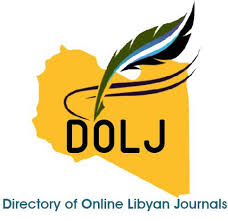The Effect of Hemodialysis on Cardiac Biomarker Levels
DOI:
https://doi.org/10.54361/ljmr.2022Keywords:
Hemodialysis, serum total of troponin I (cTn-I), creatin phosphokinase (CPK), creatine kinase-MB (CK-MB) iso-enzymeAbstract
Background: According to the United States Renal Data System (USRD), the 2013 Annual Data Report indicates that patients with chronic kidney disease (CKD) have higher rates of congestive heart failure, acute myocardial infraction (MI), and cerebral vascular accidents compared to non-CKD patients. Aim of the Study: This study aimed to investigate the effects of the hemodialysis process on cardiac biomarker levels in hemodialysis patients. Method: A prospective study was carried conducted at Emssalata central hospital's hemodialysis department. The study involved a total of 25 individuals, 15 males and 10 females who were undergoing dialysis. A chemistry analyzer was used to measure the serum troponin I (cTn-I), creatin phosphokinase (CPK), and creatine kinase-MB (CK-MB) iso-enzyme in hemodialysis (HD) patients before and after the dialysis process. Results: The results showed that total CPK, CK-MB, and cTn-I levels had no significant differences in CKD patients' pre and post-dialysis, with (p = 0.989, 0.586, and 0.284) respectively. Hemodialysis patients have none significantly higher CPK, CK-MB and cTn-I ratios after hemodialysis process when compared to the values determined to each marker before hemodialysis process. Conclusion: The dialysis process had no effect on the levels of cardiac biomarkers (CPK, CK-MB, and cTn-I) in hemodialysis patients. The cardiac biomarker in hemodialysis patients appears to be unaffected by age, gender, or dialysis duration
Downloads
References
Eknoyan, G., Lameire, N., Barsoum, R., Eckardt, K. U., Levin, A., Levin, N., Locatelli, F., MacLeod, A., Vanholder, R., Walker, R., & Wang, H. (2004). The burden of kidney disease: improving global outcomes. Kidney international, 66(4), 1310–1314.
Barreto, F. C., Stinghen, A. E., de Oliveira, R. B., Franco, A. T., Moreno, A. N., Barreto, D. V., Pecoits-Filho, R., Drüeke, T. B., & Massy, Z. A. (2014). The quest for a better understanding of chronic kidney disease complications: an update on uremic toxins. Jornal brasileiro de nefrologia : 'orgao oficial de Sociedades Brasileira e Latino-Americana de Nefrologia, 36(2), 221–235.
Vassalotti, J. A., Centor, R., Turner, B. J., Greer, R. C., Choi, M., Sequist, T. D., & National Kidney Foundation Kidney Disease Outcomes Quality Initiative (2016). Practical Approach to Detection and Management of Chronic Kidney Disease for the Primary Care Clinician. The American journal of medicine, 129(2), 153–162.e7.
Kalantar-Zadeh K & Amin AN (2012). Toward more Accurate Detection and Risk Stratification of Chronic Kidney Disease. JAMA. 307(18):1976-7.
Mallett, A., Patel, C., Salisbury, A., Wang, Z., Healy, H., & Hoy, W. (2014). The prevalence and epidemiology of genetic renal disease amongst adults with chronic kidney disease in Australia. Orphanet journal of rare diseases, 9, 98.
Levey A.S.; Eckardt K.U.; Tsukamoto Y. et al. (2005). Definition and classification of chronic kidney disease: A position statement from Kidney Disease: Improving Global Outcomes (KDIGO). Kidney International. 67(6):2089-2100
National Kidney Foundation (2002). K/DOQI Clinical Practice Guidelines for Chronic Kidney Disease: Evaluation, Classification, and Stratification. Am J Kidney Dis, Vol. 39, No. 2Suppl 1, pp. S1-266.
Shastri, S. & Sarnak, M.J (2010).Cardiovascular Disease and CKD: Core Curriculum. Am J Kidney Dis, 56, (2): p 399-417.
Ouyang, L., Bolen, J., Valdez, R., Joseph, D., Baum, M. A., & Thibadeau, J. (2015). Characteristics and survival of patients with end stage renal disease and spina bifida in the United States renal data system. The Journal of urology, 193(2), 558– 564.
Quiroga, B., Vega, A., Abad, S., Villaverde, M., Reque, J., & López-Gómez, J. M. (2016). Creatine-kinase and dialysis patients, a helpful tool for stratifying cardiovascular risk?. Nefrologia: publicacion oficial de la Sociedad Espanola Nefrologia, 36(1), 51–56.
Muharrem I1, Ebru G.O2, Tolga Y2.et.al (2014).The Effect of Hemodialysis on Cardiac Enzyme Levels. Department of Internal medicine. Int J Artif Organs. Sanliurfa, Turkey, 37(7): p513-520.eISSN:2413-6096
D'Marco, L., Bellasi, A., & Raggi, P. (2015). Cardiovascular biomarkers in chronic kidney disease: state of current research and clinical applicability. Disease markers, 2015, 586569.
Ingec, M., Oguz, E. G., Yildirim, T., Ulas, T., & Horoz, M. (2014). The effect of hemodialysis on cardiac enzyme levels and echocardiographic parameters. The International journal of artificial organs, 37(7), 513–520.
Bozbas, H., Korkmaz, M. E., Atar, I., Eroglu, S., Ozin, B., Yildirir, A., Muderrisoglu, H., Colak, T., Karakayali, H., & Haberal, M. (2004). Serum levels of cardiac enzymes before and after renal transplantation. Clinical cardiology, 27(10), 559– 562.
Naka, T., Wan, L., Bellomo, R., Wang, B. Z., Jones, R., Berry, R., Angus, P., & Gow, P. (2004). Kidney failure associated with liver transplantation or liver failure: the impact of continuous veno-venous hemofiltration. The International journal of artificial organs, 27(11), 949–955
Quiroga, B., Vega, A., Abad, S., Villaverde, M., Reque, J., & López-Gómez, J. M. (2016). Creatine-kinase and dialysis patients, a helpful tool for stratifying cardiovascular risk?. Nefrologia : publica
Downloads
Published
Issue
Section
License
Copyright (c) 2022 Zaed Mohamed Jaber, Naser Mohammed Irqayah (Author)

This work is licensed under a Creative Commons Attribution-NonCommercial-NoDerivatives 4.0 International License.
Open Access Policy
Libyan journal of medical Research (LJMR).is an open journal, therefore there are no fees required for downloading any publication from the journal website by authors, readers, and institution.
The journal applies the license of CC BY (a Creative Commons Attribution 4.0 International license). This license allows authors to keep ownership f the copyright of their papers. But this license permits any user to download , print out, extract, reuse, archive, and distribute the article, so long as appropriate credit is given to the authors and the source of the work.
The license ensures that the article will be available as widely as possible and that the article can be included in any scientific archive.
Editorial Policy
The publication of an article in a peer reviewed journal is an essential model for Libyan journal of medical Research (LJMR). It is necessary to agree upon standards of expected ethical behavior for all parties involved in the act of publishing: the author, the journal editorial, the peer reviewer and the publisher.
Any manuscript or substantial parts of it, submitted to the journal must not be under consideration by any other journal. In general, the manuscript should not have already been published in any journal or other citable form, although it may have been deposited on a preprint server. Authors are required to ensure that no material submitted as part of a manuscript infringes existing copyrights, or the rights of a third party.
Authorship Policy
The manuscript authorship should be limited to those who have made a significant contribution and intellectual input to the research submitted to the journal, including design, performance, interpretation of the reported study, and writing the manuscript. All those who have made significant contributions should be listed as co-authors.
Others who have participated in certain substantive aspects of the manuscript but without intellectual input should only be recognized in the acknowledgements section of the manuscript. Also, one of the authors should be selected as the corresponding author to communicate with the journal and approve the final version of the manuscript for publication in the LJMR.
Peer-review Policy
- All the manuscripts submitted to LJMR will be subjected to the double-blinded peer-review process;
- The manuscript will be reviewed by two suitable experts in the respective subject area.
- Reports of all the reviewers will be considered while deciding on acceptance/revision or rejection of a manuscript.
- Editor-In-Chief will make the final decision, based on the reviewer’s comments.
- Editor-In-Chief can ask one or more advisory board members for their suggestions upon a manuscript, before making the final decision.
- Associate editor and review editors provide administrative support to maintain the integrity of the peer-review process.
- In case, authors challenge the editor’s negative decision with suitable arguments, the manuscript can be sent to one more reviewer and the final decision will be made based upon his recommendations.













